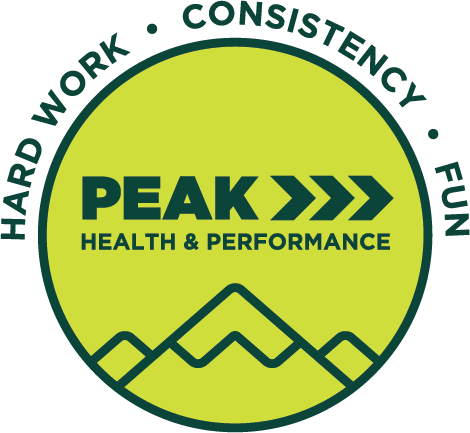Lesson Overview
Lesson 1 – Nutrition Basics
Goal: Introduce the four pillars of proper nutrition and their importance to the athlete.
Objectives:
By the end of this lesson, each athlete will be able to:
- Explain the importance of proper nutrition for performance and health
- Understand the concept of energy balance and how it relates to health and performance
- State that eating from all of the food groups of MyPlate is a healthy way for athletes to eat
- List the three macronutrients: carbohydrates, protein and fat, and their main function in an athlete’s diet
- Distinguish which of the five food groups are the main contributors of carbohydrates, protein and fat
- Set a goal to examine his/her plate and look for a variety of foods that contain protein, carbohydrates and healthy fat
Lesson 2 – Athlete Performance Plates
Goal: Understand that the amount and types of food needed for peak performance varies with the intensity and type of training or competition.
Objectives:
By the end of this lesson, each athlete will be able to:
- Construct on paper, orally, or using food models a meal that contains all of the food groups contained in MyPlate
- Describe specifically how athletes’ energy needs change on easy vs. moderate vs. harder training days
- Cite examples of healthy choices to add to a meal or snack on days when energy needs increase
- Identify servings per package, serving size, calories per serving and the three macronutrients on nutrition labels
- Know how to identify significant sources of fiber and protein as well as added sugar quantities using nutrition labels
- Set a goal to make his/her plates look like MyPlate, and to adjust food intake based on intensity and type of training or competition
Lesson 3 – Timing of Intake
Goal: Develop an understanding of the benefits of meal/snack frequency and timing of intake on overall energy levels and athletic performance.
Objectives:
By the end of this lesson, each athlete will be able to:
- List behaviors that athletes should engage in to maximize timing of intake, energy levels, and athletic performance
- State that in order to maximize athletic performance athletes should eat something every 2-4 hours
- Provide examples of pre- and post-workout Power Hour snacks that contain both carbohydrates and protein
- Recognize the importance of food safety practices when packing meals and snacks
Lesson 4 – Hydration, Energy Drinks, and Sugary Beverages
Goal: Learn the benefits of staying hydrated, how to assess hydration status and techniques to stay hydrated.
Objectives:
By the end of this lesson, each athlete will be able to:
- List at least three signs/symptoms of dehydration
- Explain how to assess hydration status
- List three ways to stay hydrated
- Carry a water bottle throughout the day
- Weigh before and after practice, for one week, and replace lost fluids based on weight lost
Lesson 5 – Convenience Foods
Goal: Learn techniques and best practices when choosing meal and snack options “on-the-go”.
Objectives:
By the end of this lesson, each athlete will be able to:
- Identify techniques for planning healthy meals and snacks
- Explain the benefits of using a grocery list when shopping
- Identify ways to make healthy meal and snack choices when eating at a restaurant or fast food restaurant
- Identify healthy snack options at convenience stores
Lesson 6 – More than a Game
Goal: Understand how sports can be a “vehicle for life.”
Objectives:
By the end of this lesson, each athlete will be able to:
- Identify ways that sports can impact physical and emotional health and well-being
- Recall ways in which sport participation has had a positive impact in their lives
- Identify ways to be continually physically active after “competitive” sport participation




 Print
Print Email
Email